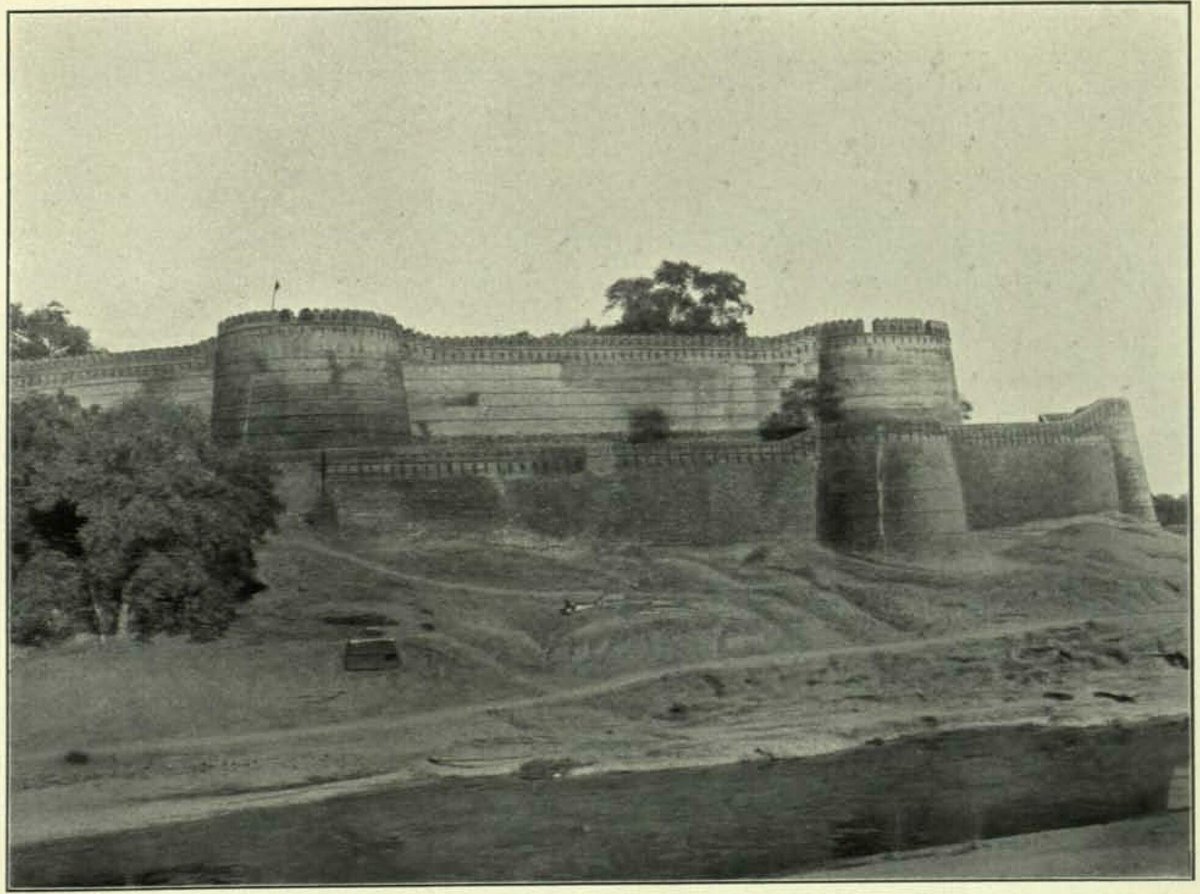
Complete Visitor Guide to Balapur Fort in Shegaon, India
Publication Date: 24/07/2024
Introduction to Balapur Fort
Balapur Fort, nestled in the Akola district of Maharashtra, India, is a remarkable testament to the country’s rich Mughal heritage. Constructed in the early 18th century under the orders of Mirza Azam Shah, the son of Mughal Emperor Aurangzeb, and completed by Ismaeel Khan, the Nawab of Elichpur, the fort stands as a symbol of architectural brilliance and military strategy (Military History Fandom). Its strategic location between the rivers Man and Bhains and the fort’s unique architectural features reflect the ingenuity of Mughal engineering (OM Astrology). Visitors to Balapur Fort can explore its rich history, cultural significance, and the harmonious coexistence of Islamic and Hindu religious sites within its premises. This comprehensive guide aims to provide all essential information, including visiting hours, ticket prices, travel tips, and nearby attractions, ensuring a memorable visit to this historical gem.
Content Overview
- Introduction
- History of Balapur Fort
- Origins and Construction
- Architectural Significance
- Military Importance
- Visitor Information
- Visiting Hours and Tickets
- Travel Tips
- Cultural and Religious Significance
- Historical Events and Repairs
- Architectural Highlights
- Current Condition and Usage
- Notable Structures within the Fort
- Conclusion
History of Balapur Fort
Origins and Construction
Balapur Fort, located in the town of Balapur in the Akola district of Maharashtra, India, is a significant historical monument with a rich past. The construction of the fort began in 1721 AD under the orders of Mirza Azam Shah, the son of the Mughal Emperor Aurangzeb. The fort’s construction was completed in 1757 AD by Ismaeel Khan, the Nawab of Elichpur (now Achalpur, Amaravati District) (Military History Fandom).
Architectural Significance
The fort is strategically situated on elevated ground between the rivers Man and Bhains, which provided a natural defense mechanism. The fort’s architecture is a testament to the engineering prowess of the Mughal era. It features high walls and bastions built from the best brickwork of its time. The fort has three gateways, one within the other, designed to enhance its defensive capabilities. This complex architecture ensured the fort’s safety and facilitated the discharge of missiles and other ammunition from within, making it one of the most impenetrable forts in the region (Military History Fandom).
Military Importance
During the Mughal period, Balapur was an important military station, and the fort played a crucial role in the town’s military responsibilities. The fort’s design and location made it a formidable stronghold. During the rainy season, the fort would be surrounded by floodwater except at one point, adding an extra layer of defense. This strategic advantage made Balapur Fort a key military asset during its time (Military History Fandom).
Visitor Information
Visiting Hours and Tickets
Balapur Fort is open to visitors daily from 9 AM to 6 PM. The entry fee is INR 50 for adults and INR 25 for children. It is advisable to check the latest timings and fees on the official website before planning your visit.
Travel Tips
- Best Time to Visit: The ideal time to visit is from October to March when the weather is pleasant.
- Nearby Attractions: Akola Fort, Narnala Fort, and Rajeshwar Temple.
- Accessibility: The fort is accessible by road from Akola, which is well-connected to major cities in Maharashtra. Visitors can hire a taxi or take a bus from Akola to reach the fort. The fort is also marked on Google Maps for easy navigation.
Cultural and Religious Significance
Balapur Fort is not only a military stronghold but also a site of cultural and religious importance. The fort houses the temple of Bala Devi, from which the town of Balapur derives its name. This temple is situated just under the fort on its southern side. The fort is also an important pilgrimage site for Hindus and a significant place of worship for Muslims, with a mosque located within its premises (OM Astrology).
Historical Events and Repairs
The fort has witnessed several historical events, including a significant flood known as the ‘dhvdya pur,’ which heavily damaged its foundations over a century ago. The damage was later repaired at a cost of Rs 3,000, funded by Jaipur. This restoration effort highlights the fort’s enduring importance and the commitment to preserving its historical integrity (Military History Fandom).
Architectural Highlights
One of the notable architectural features of Balapur Fort is the chhatri (umbrella-shaped pavilion) constructed by Mirza Raja Jaisingh. This canopy has an area of 25 square feet and stands 33 feet tall. Despite the damage it sustained during the great flood, the chhatri remains a significant architectural element of the fort (Military History Fandom).
Current Condition and Usage
Today, Balapur Fort is in relatively good condition and is maintained by the archaeological department. Some portions of the fort are used as government offices by the Maharashtra Government. This adaptive reuse of the fort ensures its preservation while keeping it functional in contemporary times (OM Astrology).
Notable Structures within the Fort
Within the fort, several structures stand out for their historical and architectural significance. The old Gazetteer mentions a mosque in Kasarkhera, built in 1737, which is a fine example of later Mughal architecture. Known as the Raozah Masjid, it contains the tomb of a local saint, Maolvi Masoom Shah. Another notable structure is a haveli built by a local saint, Sayyad Amjad, in 1703. These structures add to the fort’s historical richness and architectural diversity (Military History Fandom).
Conclusion
Balapur Fort’s history is a tapestry of military strategy, architectural brilliance, and cultural significance. From its origins under the Mughal Empire to its current status as a heritage site, the fort continues to be a symbol of Balapur’s historical legacy. Its well-preserved state and ongoing use by the government ensure that it remains a vital part of the region’s cultural and historical landscape. Download our mobile app Audiala for more updates and explore related posts on our website.

